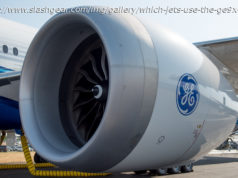We look at how Google’s Pixel 3 and Pixel 3 XL smartphone cameras compare to dedicated rivals.
We reckon Google’s new Pixel 3 and Pixel 3 XL have the best cameras going on a smartphone right now – and that’s some serious bragging rights in phones world.
But don’t take our word for it – the phones are already attracting a good deal of hyperbolic commentary, with influencers boasting that the camera on the Pixel 3 or Pixel 3 XL is so good that their DSLR will soon be gathering dust.
Yes, the camera on the Google Pixel 3 and 3 XL is good,– but is it that good? Let’s take a slightly more considered look to see where it excels – and why you probably shouldn’t be putting your DSLR on eBay just yet.
Even the best marketers at Google are going to struggle with this one. While smartphones may have bulked out in recent years, the actual physical size of their camera sensors is still pretty small compared to those used by most cameras – and that’s important, as you’ll see below.
In fact, the camera in the Pixel 3 and 3 XL uses a 1/2.55-inch sensor that measures just 5.76 x 4.29mm. That’s smaller than the 1/2.3-inch sensors found in budget compacts like the Sony Cyber-shot WX220, which is about a fifth of the cost of the Pixel 3 XL.
Now compare that to the 1-inch sensors found in a lot of premium compact cameras like the Sony Cyber-shot RX100 IV or Canon PowerShot G9 X Mark II. These measure 13.2 x 8.8mm, which starts to make Google’s 1/2.55-inch sensor look pretty small.
Then compare that to the APS-C sized sensors, measuring 23.6 x 15.6mm, that are found in a lot of DSLRs and mirrorless cameras, and it looks smaller still.
So what’s the big deal about having a larger sensor? Simply put, it all comes down to image quality. The bigger the sensor, the larger the photosites (or pixels) can be, which in turn means superior light-gathering capabilities.
This means you get images with better detail, broader dynamic range and improved noise control in poor light (essentially, images have less fuzziness and retain more detail).
Google has, however, been clever with the camera in the Pixel 3 and Pixel 3 XL, and rather than cram 16 or 20 million pixels onto the small sensor, it’s capped the resolution at 12.2MP.
Why is this a good thing? By opting for a relatively modest resolution compared to some smartphone rivals, Google can populate the sensor with larger photosites, improving its light-gathering capabilities as described above.
This sees the Google Pixel 3 and Pixel 3 XL deliver the best images we’ve seen from a smartphone, with levels of sharpening optimized so that your photos look great look great when viewed on a the phone’s display.
Look at the images on a larger screen, though, and they don’t have quite the same sparkle, so if ultimate image quality is your main concern, and/or you’re planning to print your images, there’s no substitute for the larger sensors offered by dedicated cameras.
Rather than adorning its phones with multiple lenses hooked up to different sensors, like the Huawei Mate 20, Google has also played it pretty safe with the single rear-facing camera lens on the Pixel 3 and Pixel 3 XL.
The fixed lens has a focal length of about 27mm, which offers a wide-angle field of view – so great for packing lots in the frame for group shots, landscapes and architecture, but not so good for flattering portraits, as it distorts facial features.
To get around this, the Pixel 3 and Pixel 3 XL feature a digital zoom, but unlike digital zooms on compact cameras, which simply sees the imaging area on the sensor cropped and image quality degrade, Google has equipped the camera with some clever tech called Super Res Zoom.
This uses a dedicated Pixel Visual Core chip along with machine-learning software to enable the camera to deliver improved results when you zoom in – far better than we were expecting. While there’s no substitute for an optical zoom, it’s nonetheless very impressive.
The lens on the Pixel 3 and Pixel 3 XL also has a ‚fast‘ maximum aperture of f/1.8, which helps to channel more light onto the sensor, making it that bit easier to shoot in low light as it enables you to keep shutter speeds moderately fast (hence a ‚fast‘ aperture); there’s also a built-in optical image stabilization system to help out.
But remember that small sensor? As the sensor size decreases, the depth of field will increase for a given aperture. So while it’s possible to shoot portraits and other images with beautifully smooth background blur, or bokeh, at f/1.8 on a DSLR or mirrorless camera, it’s pretty much impossible to do this on a smartphone.
To get around this problem, smartphone engineers have come up with some very clever software solutions, and on the Pixel 3 and Pixel 3 XL this solution is called Portrait Mode. Not only does the lens zoom in automatically to help deliver a more flattering focal length for portraits, but when you take a photo the camera attempts to analyze the scene and blur the background appropriately.
The Pixel 3 and Pixel 3 XL do a very solid job here, rendering some very smooth and natural-looking transitions between in-focus and out of focus areas. While certainly delivering the most aesthetically pleasing results among smartphones offering this feature, it’s not foolproof, struggling with some scenes, but for quick snaps you’ll be more than happy with the results.
The Pixel 3 and Pixel 3 XL use a dual-pixel phase-detection focusing system, and we found focusing to be generally very good.
Tap-to-focus anywhere on the screen and the camera will lock on to the subject. While not quite instant, focusing speeds are pretty quick, and even in poor light we found that the camera would lock on without ‚hunting‘ for focus.
Surprisingly, the system is also pretty handy when it comes to focus tracking. Tap on the subject you want to focus on, and providing they don’t move too erratically or quickly, it’ll maintain focus on them.
More sophisticated compacts, like the Sony Cyber-shot RX100 VI, will do a better job, while the best DSLRs and mirrorless cameras are better still, but compared to some entry-level DSLRs and mirrorless cameras the Pixel 3 and Pixel 3 XL won’t embarrass themselves in this department.
The size and shape of the Pixel 3 and Pixel 3 XL don’t lend themselves to the phones being naturally used as a camera, but this isn’t unique to Google’s phones – it’s a result of the large and thin designs of most modern smartphones.
With no dedicated handgrip and a super-smooth finish, it’s tricky to get a decent grip when holding the phone to take a photo (especially with the larger Pixel 3 XL). It just feels a bit cumbersome and unnatural, while holding it with two hands can often see fingers creep into shot.
As on any smartphone you don’t have dedicated buttons or other controls for adjusting settings (you can, though, press the volume rocker to take a shot); of course, this streamlined approach will be part of the attraction for users who simply want to press a button and walk away with a decent shot, but for those who want to flex their creative muscles it can be a bit limiting.






